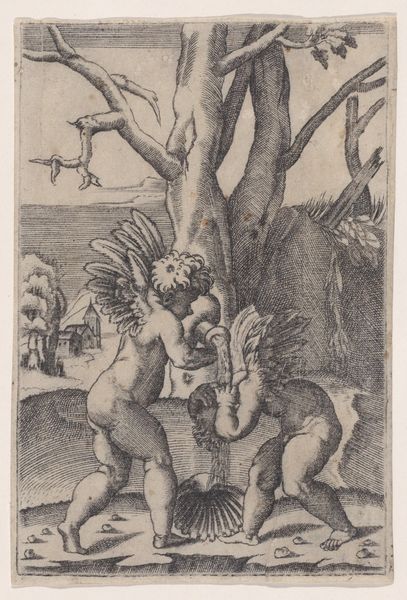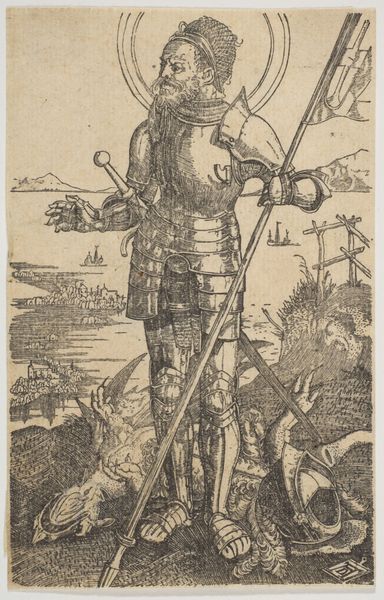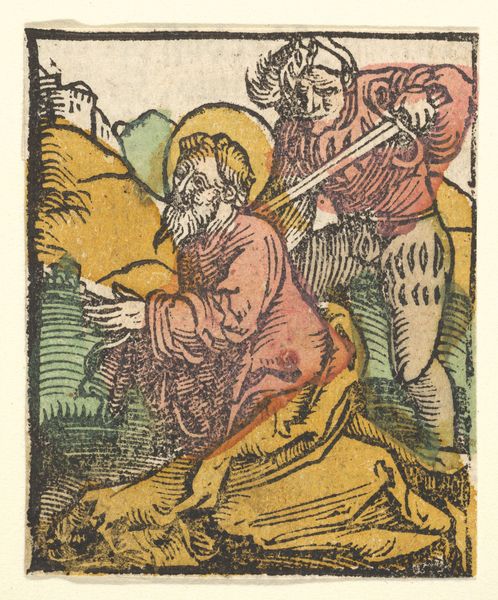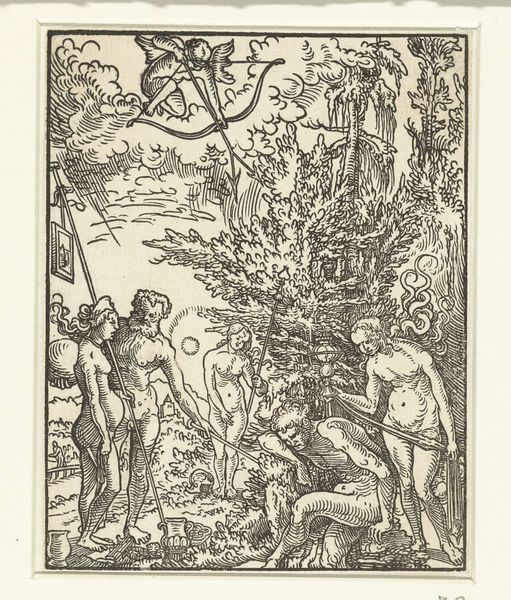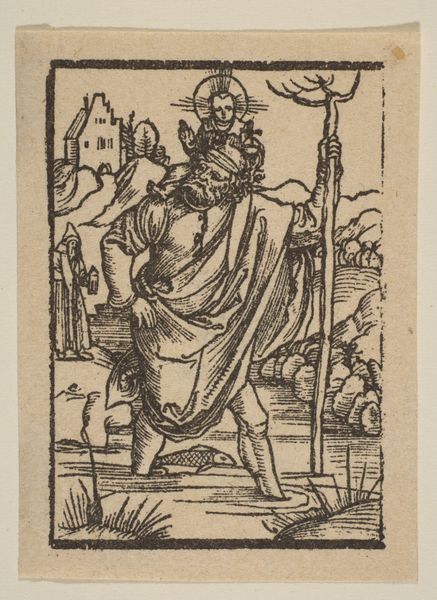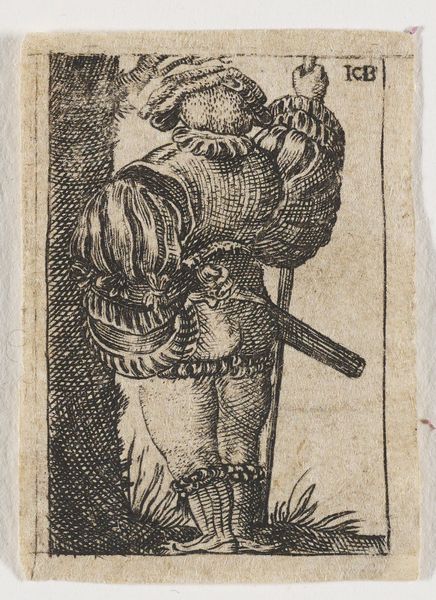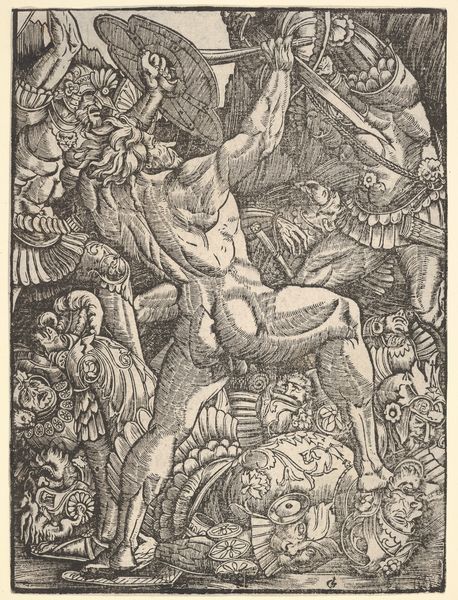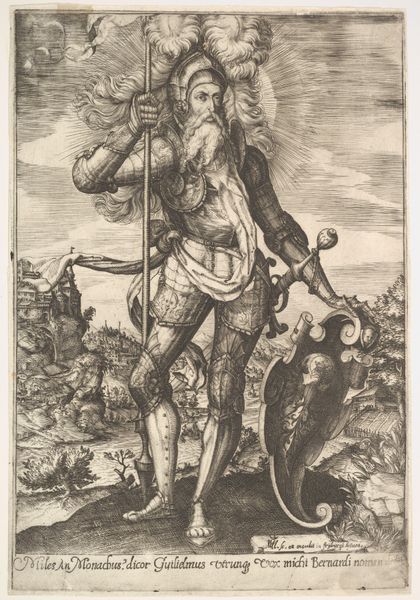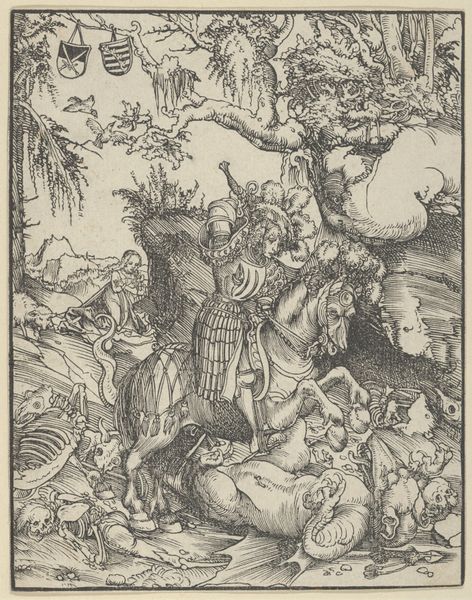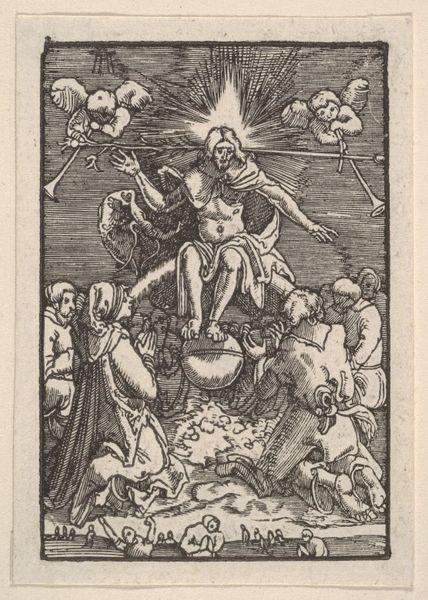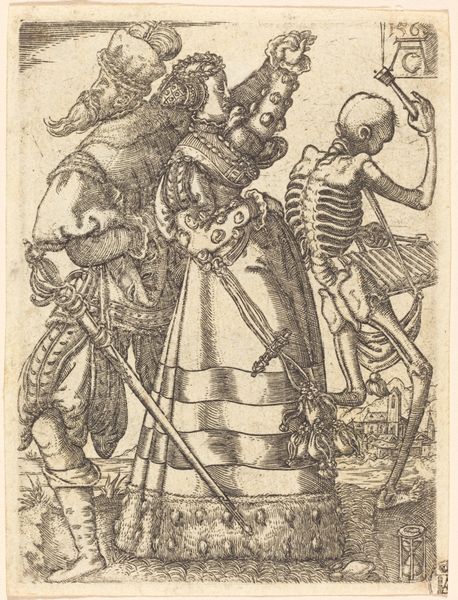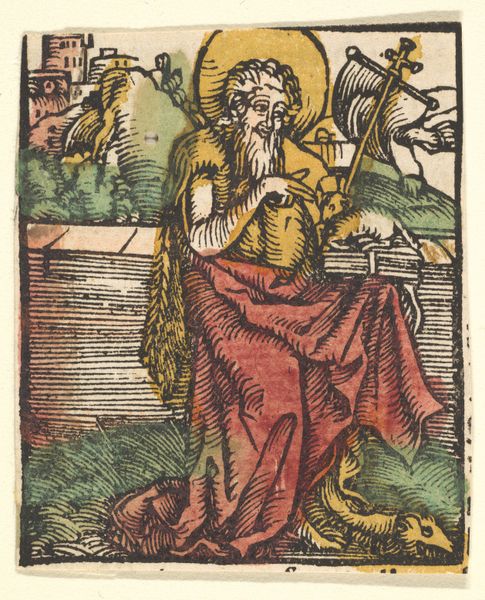
Afrique, from the playing cards (for quartets) "Costumes des Peuples Étrangers" 18th century
0:00
0:00
drawing, print, etching, ink, woodcut, engraving
#
portrait
#
african-art
#
drawing
#
narrative-art
#
ink painting
# print
#
etching
#
ukiyo-e
#
ink
#
woodcut
#
men
#
costume
#
watercolour illustration
#
genre-painting
#
history-painting
#
engraving
#
miniature
Dimensions: 3 3/16 × 2 1/16 in. (8.1 × 5.3 cm)
Copyright: Public Domain
This is an anonymous print titled "Afrique", part of a set of playing cards called "Costumes des Peuples Étrangers". It presents a seated African figure, adorned with feathers and gold, alongside a lion and tropical foliage. Created during an era of burgeoning European exploration and colonialism, such imagery reflects a Western fascination with, and often a misrepresentation of, foreign cultures. These cards were not just games, but also tools that shaped public perceptions. The visual codes here reveal much about the social and cultural context. The figure's dark skin, exotic attire, and the presence of a lion evoke a sense of the ‘other’, reinforcing stereotypes. The card participates in what we can call the ‘politics of imagery’, where representations of Africa were used to justify colonial ambitions. To truly understand this work, we need to consider its historical moment. Through research into the prints and popular culture of the time, we can start to understand how these images shaped European attitudes towards Africa. Art like this reminds us that its meaning is always contingent on its social and institutional context.
Comments
No comments
Be the first to comment and join the conversation on the ultimate creative platform.
